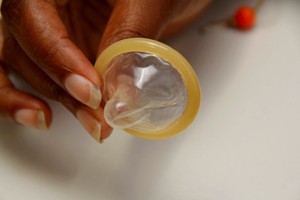Many of us have read and seen the Cinderella story; specially the part where she had to run away from the party because it was almost midnight and the magic spell she was under was wearing off. In the hustle and bustle, she left one of her glass shoes behind. The prince embarked on a mission to find her and asked all those who said the shoe belonged to them to try it on; it didn’t fit perfectly to anyone but Cinderella because it was her shoe.
It’s the same logic with contraception. Selecting a contraceptive based on influence is harmful and it can cause contraceptive failure. A large number of unintended pregnancies – 42,870,000 globally – happens as a result of unmet need of contraceptives but also due to contraceptive failure. The good news is that 82,080,000 unintended pregnancies have been averted globally as a result of use of contraceptives.
What is contraceptive failure?
Contraceptive failure is when a pregnancy occurs despite the use of a birth control method. There are two types of contraceptive failure rates:
1) Typical use failure rate – This happens when you don’t use contraceptives as instructed. Reusing a condom when the instructions clearly state that you should use it only once and then dispose it; skipping your birth control pill for a day; inserting a diaphragm wrongly; wearing a condom right before ejaculation are all examples of typical use failure rates of contraceptives.
2) Perfect use failure rate – This is when you use contraceptives as instructed but they still fail. Does the photo of a baby born holding an IUD device ring a bell? Some contraceptives would fail even when used correctly; just like our earphones getting tangled no matter how much effort we put in keeping them untangled.
It is important to mention here that contraceptive failure is not the same as failed abortion. A failed abortion is a continuation of pregnancy even after an attempt to terminate it.
So how does one minimize their chances of having a contraceptive failure? Some of the steps you can take are:
1) Get verified information
Various factors such as age, weight and lifestyle are considered to determine which contraceptive method may suit you best. You might be conveniently buying condoms from a nearby store but could be allergic to latex; you don’t want hives or stinging sensations in your vagina, do you? And that’s why it is important to make an informed decision.
There are many online sexual and reproductive healthcare service providers, who can help you make this decision. They save time and provide quality services.
2) Double Dutch method
This isn’t a skipping method. It is about using a combination of more than one method simultaneously.
One example of this method, which is also known as the contraceptive combination method, is to use a condom with a spermicide. But, again, it is important to consult a sexual healthcare provider or get information online from verified sexual and reproductive healthcare websites because you need to be sure if two or more methods can be combined. For example, using male and female condoms together can cause friction and result in a tear.
3) Proper and consistent use
Some of the common causes of unintended pregnancies include wrong use of contraception and no use of contraception. Getting a contraceptive isn’t enough to prevent a pregnancy; you have to use the method properly and regularly to prevent pregnancies.
Following instructions given by your sexual healthcare provider or from verified sexual healthcare websites would reduce your chances of having a contraceptive failure because contraceptive failure rates are linked to how accurately you use them.
4) Informed choices
Person A is using a birth control pill to basically prevent pregnancy and Person B decides it would be the best choice for her too, without considering the fact that she has to also prevent STIs. Don’t forget the STIs as pregnancy isn’t the only reason why we use contraceptives.
If you need contraceptive methods to prevent STIs, go for barrier methods. If you need it to prevent pregnancies, go for methods that suit your body best. And if you need to prevent both, combine different methods.
5) Backup contraceptive method
When we are supposed to fly and we miss our flight, we begin to look for a backup plan. The same thing happens when we are going out for an event; we have two outfits just in case something goes wrong. Then why don’t we have this approach for our sex lives? What to do if the condom broke? Or you forgot to take your pill and had sex?
In such cases, we should have a backup contraceptive method which could prevent pregnancies after we had sex. This is called emergency contraceptive methods and they come in the form of a pill or an IUD device (which you can also continue to use as your long-term contraceptive method).
The difference between backup contraceptive method and combination contraceptive method is that backup contraceptives are used after one contraceptive method has failed while combination contraceptives use two or more methods simultaneously.
So the next time you are in a position to make a decision about your contraceptive method, keep these things in mind. Contraceptives can fail and put you in an unexpected situation; and it is only sensible to cover all your bases.
Do you have something to share? Leave your comments below, contact us on our social media platforms: Facebook, Instagram and Twitter or send us an email to info@findmymethod.org. For more information on contraception, visit findmymethod.org
About the author: Amos Sanasi is a demographer, sexologist and the founder of Nigeria’s first sex-positive brand Revaginate NG which disseminates comprehensive sex information and sexual accessories, especially for those with disabilities. She tweets at @thesanasi.





